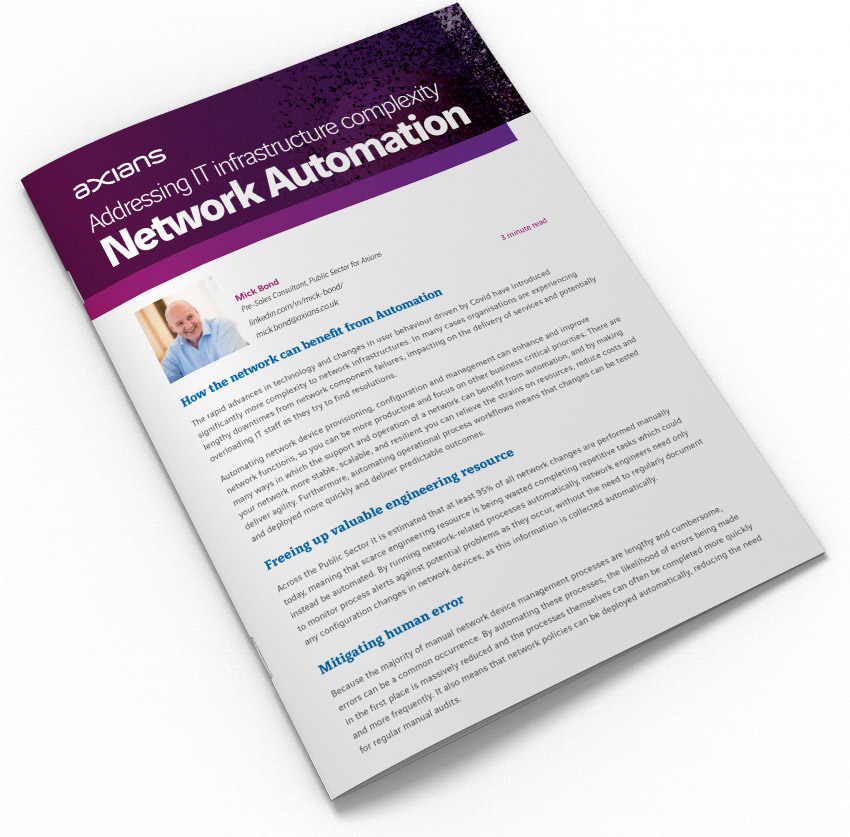HOW THE NETWORK CAN BENEFIT FROM AUTOMATION
The rapid advances in technology and changes in user behaviour driven by Covid have introduced significantly more complexity to network infrastructures. In many cases organisations are experiencing lengthy downtimes from network component failures, impacting the delivery of services and potentially overloading IT staff as they try to find resolutions.
Automating network device provisioning, configuration and management can enhance and improve network functions, so you can be more productive and focus on other business-critical priorities. There are many ways in which a network’s support and operation can benefit from automation, and by making your network more stable, scalable, and resilient, you can relieve the strains on resources, reduce costs, and deliver agility. Furthermore, automating operational process workflows means that changes can be tested and deployed more quickly and deliver predictable outcomes.
FREEING UP VALUABLE ENGINEERING RESOURCE
Across the Public Sector, it is estimated that at least 95% of all network changes are performed manually today, meaning that scarce engineering resource is being wasted completing repetitive tasks which could instead be automated. By running network-related processes automatically, network engineers need only to monitor process alerts against potential problems as they occur, without the need to regularly document any configuration changes in network devices, as this information is collected automatically.
MITIGATING HUMAN ERROR
Because the majority of manual network device management processes are lengthy and cumbersome, errors can be a common occurrence. By automating these processes, the likelihood of errors being made in the first place is massively reduced and the processes themselves can often be completed more quickly and more frequently. It also means that network policies can be deployed automatically, reducing the need for regular manual audits.
COST SAVINGS
Austerity measures introduced across the Public Sector over recent years have led to significant budget shortfalls. The need for IT departments to deliver more complex services with fewer resources is an ongoing challenge. The recruitment and retention of skilled network engineers is becoming more difficult as demands and pressures increase and public sector salaries remain frozen. By simplifying operations and automating network services, you need less staff to troubleshoot and repair and can reduce the proportion of repetitive, cumbersome day-to-day operational tasks needing to be completed.
IMPROVED SCALABILITY
Your IT infrastructure’s ability to scale can be vastly improved through automation. It allows for a more rapid rollout of new services, devices, and applications based on established and reusable processes and policies. It also means that increased network utilisation requirements can be addressed before they impact performance, without a significant investment in manpower.
GREATER INSIGHT AND CONTROL OF YOUR NETWORK
Network automation provides access to wide-ranging performance monitoring capabilities to pinpoint performance issues, spiking resource utilisation levels, and errors on the network. Advanced network analytics can provide a deeper insight into performance, utilisation, security, and resource allocation that help resolve issues far faster than via manual techniques. Automation can be a key enabler to cloud adoption, by using a common set of standards and policies to manage your workloads wherever they are.
We are offering an initial consultation as part of our network automation and cloud services assessment.




